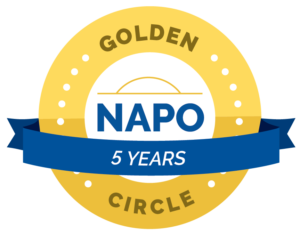Why do we procrastinate?
Procrastination, in its most basic form, is short-term mood relief.
Here’s how it goes:
There’s something you don’t want to do, let’s say writing the report your boss asked for by the end of the week. You’re a little nervous about it because you don’t know what your boss wants, and you’re unsure where to start. Even thinking about the report makes you a little anxious.
You put preparing the report on your calendar for 10:00 AM Wednesday. Then 10:00 AM Wednesday rolls around, and you don’t feel like doing it, and you tell yourself you’ll jump on it after lunch. Hint: You will probably NEVER feel like doing it, so telling yourself you will feel like doing it after lunch possibly is a big, fat lie.
Bam! You just rewarded your brain because now it doesn’t have to engage with that thing you’ve been nervous about. Phew! Mood relief.
Now, “after lunch” rolls around, and you still don’t feel like doing it. You tell yourself that you are a “morning person,” and tomorrow morning will be the perfect time to tackle this task. Again, big, fat lie.
Bam! You just rewarded your brain again. Mood relief.
Tomorrow morning rolls around . . .
Never mind, you get the drill.
Here’s the fun thing about training: dogs or our brains, the more times we do something that rewards us, the more we start looking for opportunities to create the scenario.
If you’ve ever trained a dog to sit, you get my drift. Generally, the “sit” action is rewarded with a treat. Over and over and over, again. Now, every time your dog gets near you, it sits, hoping a treat is right around the corner.
Our brains react the same way. We procrastinate. Bam! Reward. We procrastinate again. Bam! Reward. Now our brains are looking for opportunities to procrastinate so they can feel the mood relief.
The tricky part is breaking the loop.
Here are some tips:
- Analyze why you are procrastinating.
- Possibly the project is too big. Chop it up into smaller, more manageable chunks.
- Maybe you don’t know the first step. Take the smallest action possible, perhaps only opening the report file.
- Do you have the right tools and support? Sometimes we know what to do but don’t have the tools to get it done. How can you secure the tools or support?
- If the project is too big, break it down into chunks that can be done in a reasonable amount of time, 30 minutes, an hour, whatever feels good to you.
- Work in an environment that supports the task. If you are working on a computer task, try to be at a desk or table. Engaging with a work-related task while lounging in bed makes it all the more challenging. If the environment is too noisy, wear earplugs. If there is too much activity, turn your back to the action (if possible).
- Set a timer for a short amount of time. Tell yourself you only need to work on the project for, let’s say, 30 minutes. Simply knowing there is an end in sight can help with motivation.
- Reduce/Eliminate distractions. If you planned to do X and find yourself doing Y, what is it about X that you are running from? What is it about Y that you are running to? Frequently we are running from a task we don’t want to do so we can engage with something more accessible and more entertaining, often that something is social media. Make whatever it is you are running to more challenging to access but putting obstacles in your way.
- Avoid perfectionism. There’s nothing wrong with wanting things to be proper and correct. However, a report submitted that is 98% accurate is far better than a report never submitted.
- Reward small successes. Our brains crave rewards in the form of dopamine. When we check off tasks, no matter how small, we give our brains a dopamine rush. The more dopamine we give our brains, the more they crave. Small successes create a craving for more successes.
What have you been procrastinating? What’s one, small step that you can take to break the procrastination doop loop?
Now that you’ve identified it, go do it!
If you’d like more information on the procrastination loop, check these articles out:
The Procrastination Doom Loop—and How to Break It
Why procrastination is about managing emotions, not time.
How To Escape The Procrastination Doom Loop
Cindy Jobs
Looking for more information?
Click here for ADHD-friendly Time Management Tools
Click here to schedule a complimentary breakthrough session.
For more helpful information, follow me on Facebook.



Former member:






